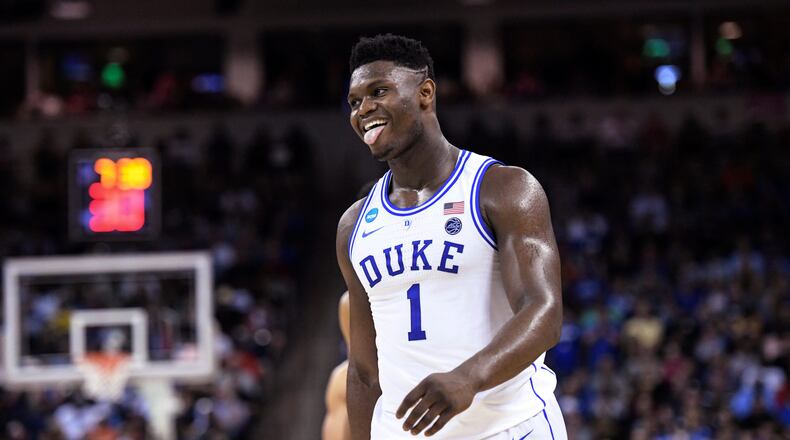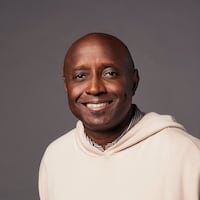Florida Republican Marco Rubio recently introduced a bill to the U.S. Senate that, if it becomes law, would compensate college athletes for use of their names, images and likeness. It contains so many exceptions, including an antitrust exemption, that athletes would not have the full economic and property rights that purportedly are central to Rubio’s ideology. That’s why the bill drew immediate support from groups that have spent more than $1 million on lobbying Congress since the beginning of 2019: the NCAA, ACC, and SEC.
A month earlier, the three-judge panel of a California federal appeals court ruled that the NCAA’s limits on “education-related” compensation for athletes violates antitrust law. But the court also found that the NCAA’s limits on athlete pay not related to education are necessary for “preserving amateurism.” Judge Milan Smith concurred with the panel’s decision even while writing that the NCAA is “a cartel of buyers acting in concert to artificially depress the price” that college athletes could receive for their services on a free market.
That’s how it’s always gone with major efforts to reform the NCAA in favor of the rights of athletes. Lawmakers and courts may be more willing to allow mild reforms now that public sentiment has shifted in favor of paying athletes. But they continue to allow NCAA schools to collude to prevent athletes from earning their full market value.
The NCAA and its defenders argue that players get most of their value from their association with schools rather than the other way around. Of course, they don’t want to test that theory by lifting restrictions on compensation. If they are right, nothing would change because athletes would continue to play only for the scholarships those defenders say are fair market compensation.
The Professional Collegiate League will serve as a kind of experiment when it begins play in summer 2021.
“Certainly, that’s exactly what we are putting to the test,” CEO Ricky Volante said. “What’s more important: the name on the back of the jersey or the name on the front?”
The PCL will look to sign elite prep basketball players who don’t want their compensation limited by the NCAA cartel. The league will pay athletes salaries of $50,000 to $150,000 along with scholarships for two- and four-year colleges or technical schools near where they play. The summer schedule means that PCL players, unlike their NCAA counterparts, won’t have to miss a lot of classes to do their jobs.
PCL players will have full rights to their name, image and likeness as well as opportunities for group licensing. They’ll receive disability insurance and financial literary education. Volante said outside groups have told him they’ll approach PCL players about forming a labor union, which he welcomes.
The PCL is open about its desire to disrupt the NCAA’s “amateur” model with a system that’s more equitable for players. But the league is a money-making venture with investors who expect a return. Volante’s group is betting there’s a viable market for summer basketball games featuring elite, young players who aren’t affiliated with colleges or universities.
The PCL had planned to begin play this summer in eight cities, including Atlanta, before deciding to delay by a year. The change was fortuitous once COVID-19 upended sports and created major logistical issues for games during the pandemic. PCL now is planning games at one or two sites next summer (Atlanta is under consideration).
Volante, a Cleveland-based lawyer, said that decision also cut the PCL’s expected operating costs for the season from $20-$25 million to about $14 million. The league is still working on securing distribution for games on television or streaming platforms. But will enough people watch games to make the PCL profitable?
It might work if the league attracts enough elite talent. The PCL will look to scoop up the best high school recruits who aren’t signed by the NBA’s new G League Select Team. Other potential candidates are players in the NCAA’s transfer portal, those who aren’t academically eligible and international prospects.
The first Select Team includes three top prospects from the 2020 American prep class: Jalen Green, Isaiah Todd and Daishen Nix. Those players signed deals for $500,000 or more. Volante sees that as a positive because more top players will look at options other than the NCAA, though he acknowledged the PCL can’t compete with those contracts.
“But if the Select Team grabs five to six players, the guy who’s No. 7 (in the class) is now left on the outside looking in,” Volante said. “He’s looking at that compensation-based model and saying, ‘Where is my opportunity? I’m still a five-star (recruit). I’ve got 500,000 followers on Twitter and Instagram. I have significant value.’ ”
He makes a good point. The best boys basketball recruits have market value that isn’t dependent on playing for an NCAA program. By the time they make it to campus, they’ve already developed a following via social media, YouTube videos and coverage from recruiting sites. Former Duke star Zion Williamson is a prime example of that phenomenon.
Volante notes that Williamson's YouTube videos during his senior year of high school got more views than Duke basketball videos. Williamson couldn't monetize that traffic without sacrificing his NCAA eligibility. To make the case that Williamson was more valuable to Duke than the opposite, Volante cites the Duke-North Carolina rivalry game in February 2019.
The game was a big event — President Obama was in attendance — with Williamson as the main attraction. The weeknight game on ESPN drew the biggest audience (4.3 million viewers) in five years for a college basketball game. The audience was 88% larger than the first Duke-UNC game of the previous season.
After the season, Williamson declared for the NBA draft and was selected No. 1 overall. When Duke and UNC met for a Saturday game on ESPN last February, the audience of 2.67 million viewers was 38% smaller than for the February 2019 game. According to Sports Media Watch, the TV audience for Duke games throughout 2019-20 was down significantly without Williamson.
“With Zion, all of the sudden Duke basketball was rating better than a regular-season NBA game,” Volante said. “If you are arguing that people are watching Duke because the jersey says Duke, why are that many fewer people tuning in to a rivalry game (without Williamson)? At least two million people let the quality of players on the court guide whether they watch.”
Not many college-aged players have the same star power as Williamson. But there are plenty whose market values are much higher than a scholarship. Two top players from the 2019 prep class, LaMelo Ball and RJ Hampton, provided evidence of that .
Ball's Illawarra Hawks played Hampton's New Zealand Breakers last October in an Australian's top basketball league. Nearly two million people watched on a Facebook live stream. That was after one million people watched Ball's debut three weeks earlier.
The NBA still requires players to be one year removed from high school to be draft eligible. The PCL will provide players a basketball option other than signing internationally or working for an NCAA program for no salary. The key for the PCL’s profitability may be securing favorable deals for media rights, shoes and apparel. That will become easier if the league signs enough top players from the next recruiting class.
I hope the PCL can become a better option for college players than the NCAA. Colleges programs offer players some value, such as coaching and marketing. But those things are worth less than the revenue generated by athletes, especially the highest-profile players, with the profits confiscated by schools, coaches and administrators.
The lack of basic economic rights for athletes also is an issue for racial equality. At the NCAA's top level, the well-compensated basketball coaches, football coaches and athletics directors are overwhelmingly white. Most of the unpaid players are black. The NCAA is part of the systemic problems that drive the racial wealth gap.
The PCL aims to give players an education and a salary that reflects their market value. If politicians and the courts won’t break up the NCAA’s cartel, maybe direct competition can do it.
About the Author
The Latest
Featured

